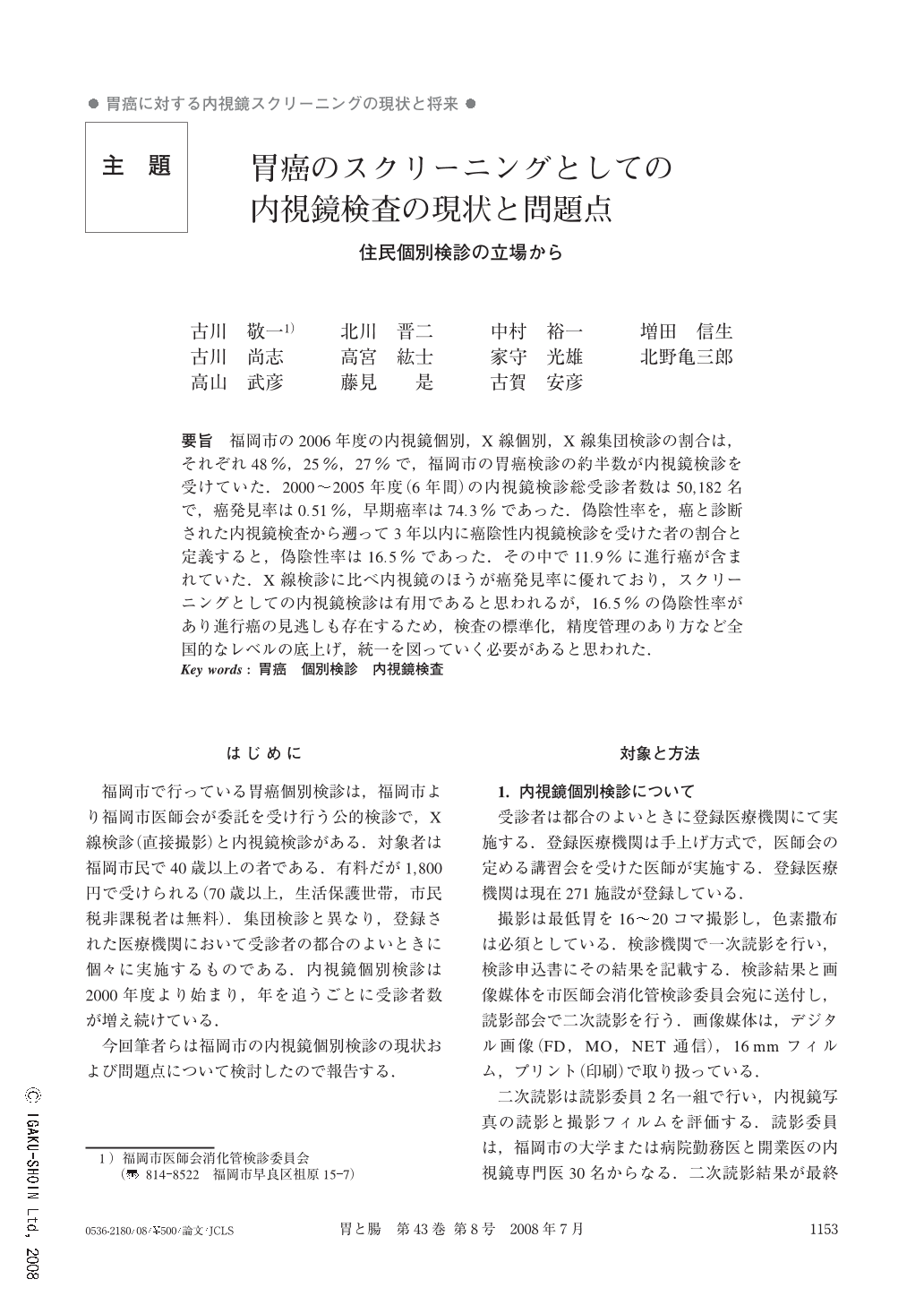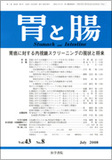Japanese
English
- 有料閲覧
- Abstract 文献概要
- 1ページ目 Look Inside
- 参考文献 Reference
- サイト内被引用 Cited by
要旨 福岡市の2006年度の内視鏡個別,X線個別,X線集団検診の割合は,それぞれ48%,25%,27%で,福岡市の胃癌検診の約半数が内視鏡検診を受けていた.2000~2005年度(6年間)の内視鏡検診総受診者数は50,182名で,癌発見率は0.51%,早期癌率は74.3%であった.偽陰性率を,癌と診断された内視鏡検査から遡って3年以内に癌陰性内視鏡検診を受けた者の割合と定義すると,偽陰性率は16.5%であった.その中で11.9%に進行癌が含まれていた.X線検診に比べ内視鏡のほうが癌発見率に優れており,スクリーニングとしての内視鏡検診は有用であると思われるが,16.5%の偽陰性率があり進行癌の見逃しも存在するため,検査の標準化,精度管理のあり方など全国的なレベルの底上げ,統一を図っていく必要があると思われた.
Among gastric cancer screening program subjects in Fukuoka city in 2006, ratios for each modality were 48%for endoscopy, 25%for ordinary upper GI series, and 27%for X-ray mass screening. Therefore, approximately half of the gastric cancer screening program subjects in Fukuoka city underwent endoscopy. From 2000 to 2005, 50,182 subjects underwent gastric endoscopy for gastric cancer screening, and the detection ratio of gastric cancer was 0.51%, of which that of early gastric cancer was 74.3%. When the false-negative is defined as gastric cancers undetected in prior gastric endoscopy performed during the previous three years, the false-negative ratio was 16.5%. 11.9%of those lesions were advanced cancer. Endoscopy appeared to be more useful in gastric cancer screening in comparison with x-ray examinations. However, because of the 16.5%of false-negative diagnoses including advanced gastric cancers, a nationwide standardization of the endoscopic screening method, quality control, and equalization of the efficacy of screening should be established.

Copyright © 2008, Igaku-Shoin Ltd. All rights reserved.


